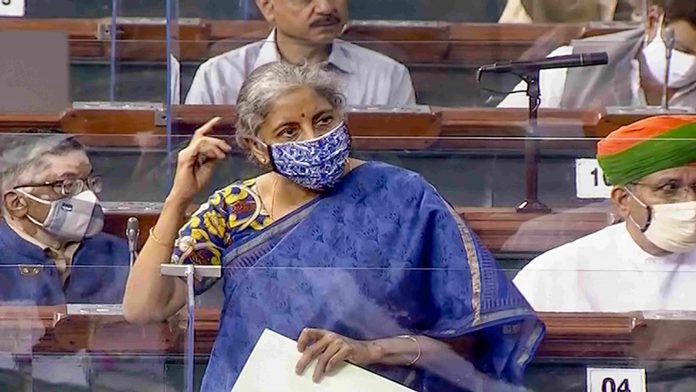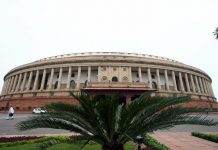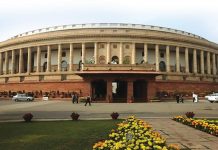This article is written by Rudresh Mishra, from the School of Law, Jagran Lakecity University, Bhopal. This article analyses the National Bank for Financing Infrastructure and Development Bill.
Table of Contents
Introduction
On March 22, 2021, National Bank for Financing Infrastructure and Development Bill, 2021 was introduced in the Lok Sabha, aiming to create the National Bank for Infrastructure and Development Finance (NBFID) as a principal Development Financial Institution (DFI) for infrastructure financing. DFIs were created to provide long-term funding for economic sectors that involve risks beyond the acceptable limits of commercial banks and other ordinary financial institutions. Unlike banks, DFIs do not accept personal deposits, They source funds from the market, government and, multilateral institutions, and are usually supported by government guarantees. This article will be giving an overview of the newly introduced Bill.
Background
For emerging economies like India, it is still crucial to find sources of investment for infrastructure, because good infrastructure is the backbone of rapid economic growth and development. Long-term loan financing and professionally managed development financial institution (DFI) will serve as a provider, intermediary, and catalyst for infrastructure financing. DFI was established with a capital base of Rs. 20,000 crores and lending target of Rs. 5 lakh crore in three years.
Purpose and objectives
The main development goal of NBFID is to cooperate with the central and state governments, regulatory agencies, financial institutions, institutional investors, and other major players in India and abroad to help establish and improve the necessary institutions to support the long-term growth of infrastructure, including domestic bond and derivatives markets.
The financial goal of the Institution is to directly or indirectly lend or invest and to attract the private sector and institutions to invest in infrastructure projects in India or parts of India and parts outside of India to promote long-term economic growth in India.
Need for the Bill
India needs to invest heavily in infrastructure. Infrastructure funds require long-term non-recourse funds, which have inherent risks due to higher borrowing costs, delays, and higher risks of project failure. Though banks rely heavily on short-term liabilities, infrastructure financing is essentially long-term financing. Therefore, long-term infrastructure financing exposure has always been the main factor leading to mismatches in bank balance sheets, causing systemic concerns. On the other hand, the Indian corporate bond market is not deep and mature enough to meet India’s infrastructure financing needs.
In this context, as part of the greenfield infrastructure project, it is necessary to promote sustainable economic development, facilitate the inflow of low-cost, long-term patient capital (mainly debt) from India or abroad, and ensure the establishment of a national infrastructure finance bank and development as the most important financial institution. Initially, the institution will be wholly owned by the central government to build confidence in its stability and sustainability and to obtain resources at competitive prices.
Salient features of the Bill
Development of financial institutions
To create a formal institution called the National Bank for Financing Infrastructure and Development to support India’s long-term infrastructure financial development and develop infrastructure financial services. The institution must have development and financial goals, and the share capital of the institution must be one crore rupee.
Equity of the institution
To allow the central government, multilateral institutions, sovereign wealth funds, pension funds, insurance companies, financial institutions, banks, and other institutions to hold at least twenty-six percent shares in the institution at all times.
Board of Directors
The board of directors of this institution is composed of the following members:
- President, appointed by the central government in consultation with the Reserve Bank;
- A Managing Director, to be appointed by the administrative committee;
- Not more than three deputy managing directors, each deputy managing director are appointed by the board of directors;
- Two central government officials appointed by the central government;
- The number of directors shall not exceed three, and they shall be elected by shareholders in due time. In addition to the central government, shareholders own 10% of the shares. One director may be appointed if it exceeds the entire issued share capital;
- The number of independent directors appointed by the board of directors on the recommendation of the Nomination and Remuneration Committee shall not exceed three or one-third of the total number of directors on the board, whichever is greater; it also stipulates that at least one of the directors mentioned in paragraph (e) or in clause (f) must be a woman. Council meetings must be held at least once a quarter, and such meetings must be held at least four times a year.
Power and functions of the Institution
The Institute will perform the following functions and exercise the following powers, namely:
- Will establish a subsidiary, joint venture, or branch in India or outside India to perform its functions; and with any such subsidiary, joint venture or branch to make any arrangements;
- Coordinating its activities and the activities of various institutions involved in infrastructure financing, and assigning qualified staff to investigate issues related to infrastructure financing;
- Establishing trusts to create such funds to help in the financing of infrastructure projects in India or part of India and part of infrastructure projects outside India;
- Obtains or refinances existing loans from lenders for infrastructure projects in India or partly in India and partly outside India;
- Loans and advances to be granted to them (with or without securities) transferred to a trust for consideration;
- Transfer of issued securities to institutions, etc.
Guarantee, grant, and other concessions
It is stipulated that the central government can provide guarantees for bonds, promissory notes, and loans related to the payment of principal and interest in accordance with the requirements of the institutions and the interest rates and conditions agreed by the central government. It also stipulates that the central government can provide grants or donations to support the institute in the form of cash or government bonds when necessary.
The prior sanction for investigation and prosecution
No investigation agency, including the police, the Central Bureau of Investigation (CBI), Serious Fraud Investigation Office, Directorate of Enforcement, and other agencies, may investigate or investigate any crimes suspected of being committed under any law. Regarding the recommendations or decisions made by the President or other directors, or senior staff of the agency in the execution of their official duties or duties without the prior consent of the central government, in the case of the President or other directors, and implementation in the case of other employees. In cases involving NBFID staff, the court will also seek preliminary sanctions before known criminal offenses.
Benefits of the Bill
The Bill paved the way for the establishment of a government-owned Development Finance Institution (DFI). The role of DFIs has remained instrumental in enhancing Infrastructure projects, finances, debt flow improvement, etc.
This will help develop a deep and liquid bond market that meets India’s international standards for long-term infrastructure financing, including expanding the issuer and investor base. Other innovative financial tools that may be needed to finance infrastructure such as markets for interest rate derivatives, currency derivatives, etc, may be necessary for infrastructure financing.
It will also lay a solid foundation for attracting equity investment from domestic and global institutional investors and debt investment including green finance, and satisfying funding needs to be based on investors’ risk appetite and asset-liability status in order to cater financing needs of India’s infrastructure sector.

Statement of objects and reasons
It was decided to create a legally established institution, the National Infrastructure and Development Finance Bank, as the main development financial institution and development bank to finance infrastructure and eliminate market chaos. They came from disadvantages and lasted a long time. The institution will be wholly owned by the central government from the beginning to build confidence in its stability and sustainability, and to protect resources at competitive prices. The government will provide this institution with donations and donations, preferential foreign loan guarantees, and all other concessions. After the research institute reaches stability and business scope, it can consider dissolving or selling the equity, but the state will always retain 26% of the paid-up voting share capital of the institution as per the Bill.
The institution will have financial goals and development goals. This includes, among other things, developing a high-volume and liquid bond market in accordance with international standards for long-term infrastructure financing in India, and expanding the issuer and investor base. A market for interest rate derivatives, credit derivatives, currency derivatives, and other innovative financial instruments that may require infrastructure financing. Investors conduct green financing based on their risk appetite and asset-liability status to meet the financing needs of the Indian infrastructure sector.
Debt instruments, including bonds and notes issued by institutions, must be considered suitable for authorized investment, securities, and other purposes, subject to the restrictions and conditions set by Indian financial regulators for their regulated entities. It also has the right to provide loans or invest in infrastructure projects in India or partly in India and partly outside India to reduce systemic risks, improve credit quality, subordinated debt, and the maturity date of reasonable debt during the project life cycle.
To obtain long-term emergency funds for the institution, it can also participate in the project construction, monitoring and monetization of projects carried out by itself or through its subsidiaries, such as guarantee, subscription, and distribution services. In general, the agency should serve as a provider, tool, and catalyst for sustainable infrastructure financing in India, and receive government support throughout the life cycle of infrastructure projects. The institution will support the bond market to promote the complementarity of debt generated by the market and loans for infrastructure projects.
Therefore, it is recommended to enact a law, the National Bank for Financing Infrastructure and Development Bill, 2021, which stipulates:
- National Bank for Financing Infrastructure and Development to support the long-term development of India’s regular infrastructure financing and commercial financing infrastructure;
- Allowing the central government, multilateral institutions, sovereign wealth funds, and other institutions to hold capital in institutions;
- Authorizing the institution to fund infrastructure projects in India or partly in India and partly outside India;
- Allowing the institution to borrow, or otherwise obtain funds in rupees and foreign currencies;
- Providing reasonable protection for decision-making to avoid risks;
- In addition to the institutions established by the proposed law, it also provides for the establishment of further development of a financing institution.
Conclusion
On March 22, 2021, the Honorable Minister of Finance Nirmala Sitharaman introduced the National Bank for Financing Infrastructure and Development Bill, 2021. Established long-term infrastructure financing without recourse in India. It also includes the development of the bond and derivatives market needed to fund infrastructure and develop infrastructure financing business, as well as the issue of whether it is related to.
Issuing loans and advances for infrastructure projects, accepting or refinancing existing loans, attracting investment from private and institutional investors for infrastructure projects, organizing and promoting foreign participation in infrastructure projects promoting negotiations with various government agencies to resolve the scene dispute. Infrastructure financing and infrastructure financing consulting services. Countries can reimburse all or part of the costs associated with hedging exchange rate fluctuations. At the request of NBFID, the state can provide guarantees for bonds, promissory notes and loans issued by NBFID.
References
- http://164.100.47.193/Refinput/New_Reference_Notes/English/23032021_124844_1021205239.pdf
- https://www.legalserviceindia.com/legal/article-6096-the-national-bank-for-financing-infrastructure-and-development-bill-2021.html
- https://prsindia.org/billtrack/the-national-bank-for-financing-infrastructure-and-development-bill-2021
- https://www.drishtiias.com/daily-updates/daily-news-analysis/national-bank-for-financing-infrastructure-and-development-bill-2021
- https://empowerias.com/blog/prelims-special-facts/national-bank-for-financing-infrastructure-and-development-bill,-2021-empower-ias
LawSikho has created a telegram group for exchanging legal knowledge, referrals and various opportunities. You can click on this link and join:
https://t.me/joinchat/J_0YrBa4IBSHdpuTfQO_sA
Follow us on Instagram and subscribe to our YouTube channel for more amazing legal content.
 Serato DJ Crack 2025Serato DJ PRO Crack
Serato DJ Crack 2025Serato DJ PRO Crack










 Allow notifications
Allow notifications



